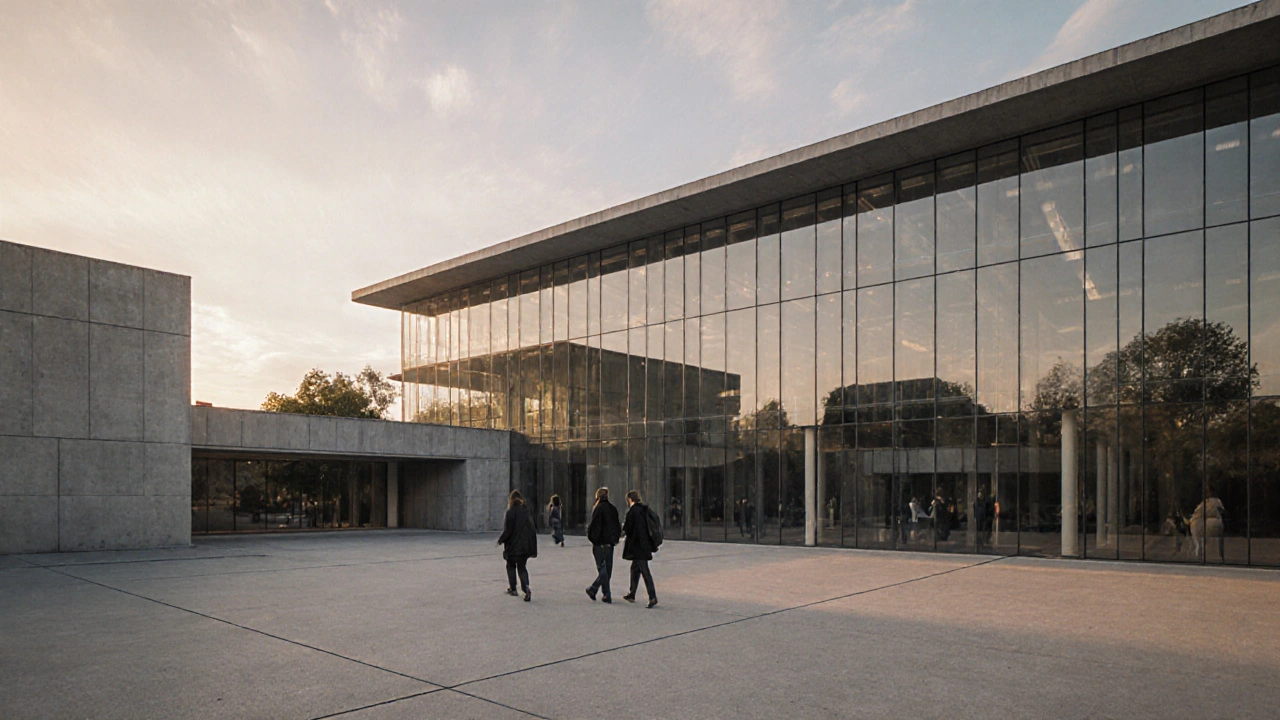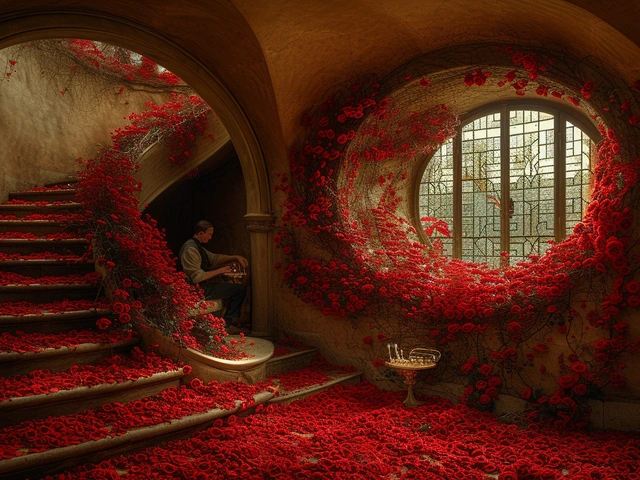Bauhaus Design Knowledge Quiz
How Much Do You Know About Bauhaus?
Test your understanding of the Bauhaus movement with this 6-question quiz. Each question has one correct answer. After each question, you'll receive immediate feedback on your choice.
What was the primary mission of the Bauhaus school?
Before the Bauhaus, design was divided. Furniture looked ornate, buildings were decorated like theaters, and everyday objects were made to look fancy, not functional. Then, in 1919, a school opened in Weimar, Germany, that didn’t just teach art - it rewrote the rules of how things should look, feel, and work. The Bauhaus didn’t just influence design. It rebuilt it from the ground up.
What the Bauhaus Actually Was
The Bauhaus wasn’t a style. It wasn’t even just a school. It was a radical experiment in merging art, craft, and technology. Founded by architect Walter Gropius, it brought together painters, sculptors, carpenters, metalworkers, and weavers under one roof. Their mission? To break down the old hierarchy that treated fine art as superior to handmade objects. A chair wasn’t just furniture - it was a design problem to solve.
The school moved from Weimar to Dessau in 1925, and that’s where its most famous buildings were built - especially the Dessau campus itself. Clean lines. Flat roofs. Glass walls. No ornament. Just structure, function, and light. The building didn’t just house the school - it was the school’s manifesto made concrete.
Teachers like Wassily Kandinsky, Paul Klee, and László Moholy-Nagy didn’t just lecture. They pushed students to experiment. To build. To fail. To try again. Students learned by doing - weaving textiles, forging metal, designing typefaces, constructing models. There were no separate departments for ‘art’ and ‘design.’ Everything was connected.
The Design Principles That Still Rule Today
Ask yourself: Why do your coffee mugs have smooth handles? Why do your phones have no buttons? Why do IKEA shelves look so simple? That’s Bauhaus.
Three core ideas came out of the school:
- Form follows function - If something works well, it will look right. No extra decoration needed.
- Less is more - Remove anything that doesn’t serve a purpose. Clutter is the enemy.
- Design for mass production - Beautiful things shouldn’t be for the rich. They should be affordable and available to everyone.
These ideas sound obvious now. But back then, they were heresy. Furniture makers still carved floral patterns into chair legs. Architects added columns to apartment buildings just because they looked ‘classical.’ The Bauhaus said: stop pretending. Make things that fit real life.
The iconic Bauhaus chair - the Wassily Chair - was designed by Marcel Breuer in 1925. He took bicycle handlebars, bent them into a frame, and added leather straps. No wood. No carving. Just steel and fabric. It was cheap to make, durable, and looked like nothing else. Today, it’s still sold in design stores worldwide. That’s the power of solving a problem, not decorating a surface.
Typography That Changed How We Read
Before Bauhaus, most books and posters used ornate, flowing fonts. Think curling serifs, heavy shadows, and decorative initials. Then Herbert Bayer came along. He designed a single, lowercase alphabet - no capitals, no flourishes. Just clean, geometric letters that were easy to print and read from a distance.
His Bauhaus typeface became the blueprint for modern sans-serif fonts like Helvetica, Arial, and Futura. Even your smartphone’s default font owes something to that 1920s experiment. The goal wasn’t to look pretty. It was to be clear. Fast. Universal.
Posters from the school used bold blocks of color, asymmetrical layouts, and bold typography. They didn’t whisper. They shouted - clearly. This approach became the foundation of modern advertising, branding, and web design. Look at Apple’s website. Or Spotify’s app. No clutter. No confusion. Just information, arranged with precision.
How Bauhaus Built Modern Architecture
Think of a glass office tower with a flat roof and long horizontal windows. That’s Bauhaus. The Dessau building wasn’t just a school - it was a prototype for the modern workplace, hospital, and apartment block.
Before Bauhaus, buildings were loaded with details: cornices, moldings, arches, balconies with iron railings. Bauhaus architects stripped all that away. They used steel, concrete, and glass - materials that were new, strong, and cheap. They didn’t hide the structure. They celebrated it. Exposed beams. Large windows. Open floor plans.
The Barcelona Pavilion, designed by Ludwig Mies van der Rohe (who later led the Bauhaus), is a perfect example. Four steel columns hold up a flat roof. Glass walls slide open. The floor is marble. There’s no ornament. Just space, light, and material. It was built in 1929. Today, it’s one of the most copied buildings in the world.
Modern housing? The Bauhaus made it possible. The idea of a small apartment with built-in shelves, a kitchen that fits efficiently, and a balcony for fresh air? That came from Bauhaus housing projects in Berlin and Stuttgart. These weren’t luxury homes. They were designed for workers. For families. For people who needed good design, not just decoration.
The Global Spread - And the Forced Exodus
The Nazis hated the Bauhaus. They called it ‘degenerate,’ ‘un-German,’ and ‘Bolshevik.’ In 1933, they shut it down. But the ideas didn’t die. They flew.
Walter Gropius went to Harvard. Mies van der Rohe moved to Chicago. Marcel Breuer landed in New York. László Moholy-Nagy started a new school in Chicago - the New Bauhaus - which later became the Institute of Design. These teachers didn’t just bring blueprints. They brought a mindset.
By the 1950s, American corporations were hiring Bauhaus-trained designers. The IBM logo? Clean lines, no serifs. The Eames chairs? Bent plywood, no unnecessary curves. The Coca-Cola vending machine? Functional, stackable, easy to service. All of it - Bauhaus.
Even Japan’s postwar design boom was shaped by Bauhaus. Designers like Isamu Noguchi and the team behind Sony’s early electronics borrowed the school’s belief that beauty comes from precision, not ornament.

Why Bauhaus Still Matters Today
Look around your home. Your phone. Your car’s dashboard. Your favorite app. Every one of them follows the same rules the Bauhaus taught: simplicity, honesty, function.
Today’s ‘minimalist’ trend? That’s just Bauhaus with better lighting. The rise of flat design in apps? That’s Herbert Bayer’s lowercase alphabet in digital form. The popularity of modular furniture? That’s the Bauhaus idea of standardization made real.
But here’s the catch: most people think ‘Bauhaus’ means ‘all white’ or ‘cold’ or ‘sterile.’ That’s not it. The school didn’t hate color. Kandinsky and Klee used bold reds, yellows, and blues in their work. The school didn’t hate warmth - it hated pretense. A chair that’s comfortable, well-made, and affordable isn’t cold. It’s human.
The real legacy of the Bauhaus isn’t in its furniture or buildings. It’s in the belief that design should serve people - not the other way around. That good design isn’t a luxury. It’s a right.
What the Bauhaus Got Wrong
It wasn’t perfect. The school struggled with gender. Women were pushed into weaving - seen as ‘feminine’ - while men dominated architecture and metalwork. Only a few women, like Gunta Stölzl, broke through.
Some of its mass-produced designs were too rigid. Furniture that looked good in a catalog didn’t always fit real bodies. And while the school dreamed of affordable design, many pieces were too expensive for workers to buy - at least at first.
But these flaws don’t erase the revolution. They just remind us that change is messy. The Bauhaus didn’t have all the answers. But it asked the right questions.
Where to See Bauhaus Today
If you want to feel the spirit of the Bauhaus, visit the Bauhaus Archive in Berlin. Or the Dessau campus - still standing, still teaching. The Museum of Modern Art in New York has the largest collection of original Bauhaus pieces. Even in Melbourne, you’ll find Bauhaus-inspired furniture in design shops on Brunswick Street or the National Gallery of Victoria’s modern design wing.
You don’t need to travel far to see it. Look at your coffee maker. Your desk lamp. Your tablet case. If it’s simple, clean, and works without fuss - you’re holding a piece of the Bauhaus.
What made the Bauhaus different from other art schools?
Unlike traditional art schools that focused on painting and sculpture as elite crafts, the Bauhaus treated all design - from typography to furniture - as equal. It merged fine art with industrial production and required students to learn by making, not just observing. It broke down the hierarchy between artist and craftsman.
Is Bauhaus the same as modernism?
Bauhaus is a major part of modernism, but not the whole thing. Modernism is a broad movement that includes architecture, art, and literature across many countries. Bauhaus was a specific school and philosophy that became one of the most influential drivers of modernist design, especially in Europe and the U.S.
Why did the Nazis shut down the Bauhaus?
The Nazis saw the Bauhaus as a threat because it promoted internationalism, abstraction, and equality - values they rejected. They called it ‘degenerate art’ and accused it of being influenced by Jewish and Communist ideas. Its emphasis on functional design over tradition clashed with their romanticized view of German culture.
Did Bauhaus designers only make furniture and buildings?
No. They designed everything from typefaces and posters to textiles, lighting, and even tea sets. Their goal was to redesign everyday life. One student, Marianne Brandt, became famous for her metal teapots and ashtrays - industrial objects made with precision and elegance.
Can I still buy original Bauhaus pieces today?
Yes. Many original designs are still in production. Companies like Knoll and Thonet still make the Wassily Chair and the Cesca Chair. IKEA’s flat-pack furniture follows the same philosophy - even if it’s not made by the school. You can find authentic pieces in museums, auction houses, or licensed reproductions from trusted design retailers.
If you want to understand why your world looks the way it does - from your phone screen to your kitchen utensils - start with the Bauhaus. It didn’t just change design. It made design matter.




